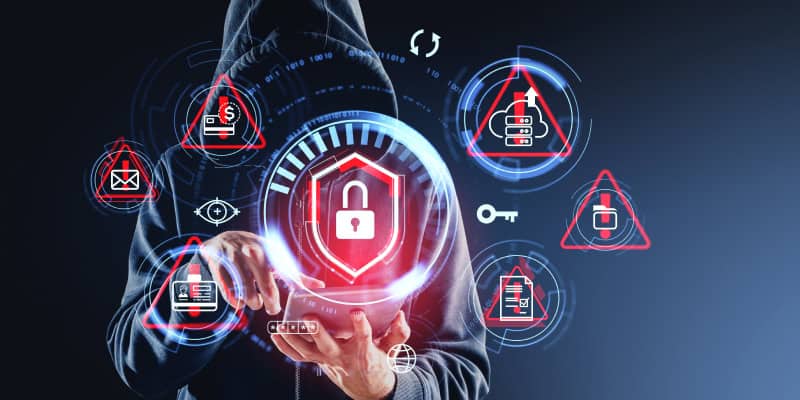Cybercrime threatens businesses of every size. However, many small business owners might wonder, “Are small businesses really a target for cyberattacks?” The answer is a resounding yes. Small businesses and nonprofits are often perceived as the most vulnerable targets for hackers.
Past studies have shown that 43% of cyberattacks target small businesses, yet only 14% are properly prepared to defend themselves. A majority of SMEs fear that hiring cybersecurity services requires a massive upfront investment and ongoing costs that far exceed their budget constraints.
This belief isn’t just outdated—it’s downright dangerous.
In this guide, we’ll debunk these financial myths and show you exactly how small businesses can afford enterprise-grade cybersecurity without enterprise-level price tags.
The Biggest Misconception About Cybersecurity Costs
It seems that when discussing cybersecurity, many small businesses believe enterprise-grade solutions are financially out of reach. When considering the required upfront investment in hardware and software, coupled with ongoing maintenance fees, this perception seems justified.
Furthermore, without dedicated in-house expertise to implement these systems, you could leave dangerous security gaps. This fear isn’t unfounded. The industry’s historical focus on large corporations has left small businesses and nonprofits, which often operate with tighter budget constraints and rely on part-time volunteers, at a disadvantage.
Therefore, enterprise-grade cybersecurity is no longer a luxury but a fundamental necessity for any organization. But what does “enterprise-grade” truly mean for you? It’s less about massive price tags and more about strategic, comprehensive protection. Let’s next break down what this kind of protection actually includes.
Defining Modern Enterprise-Grade Protection
Enterprise-grade cybersecurity is a strategic approach that large organizations implement to protect their networks, data, and systems.
This strategy relies fundamentally on multi-layered protection, where multiple defenses work together to create robust security. So, to answer the question, “What cybersecurity is essential for a small business?,” the key is to build a robust, multi-layered defense that encompasses:
- Multi-Layered Protection: Multiple security layers collaborate to guard against diverse threats rather than depending on a single solution.
- Advanced Threat Detection: Modern tools powered by Artificial Intelligence (AI) identify sophisticated threats that standard antivirus misses, thereby reducing “alert fatigue” by filtering noise and focusing on genuine risks.
- Continuous Monitoring: Around-the-clock surveillance detects unusual network activity immediately. Don’t try to manage this alone, though—it’s practically impossible for small businesses without dedicated resources.
- End-to-End Protection: Secures every endpoint connecting to your network—computers, smartphones, and tablets—using specialized endpoint protection software.
These elements combine to form a powerful defensive shield against evolving threats. Now, the key isn’t buying each component separately but accessing them through modern cybersecurity services. The following section explores how small businesses can affordably access this level of protection.
Also Read: Reasons Why 24/7 Cybersecurity is the Need of the Hour
The Subscription Model: Making Security Affordable
So, how much should a small business pay for cybersecurity? The answer isn’t a fixed dollar amount but rather a strategic shift: moving from purchasing security products to subscribing to cybersecurity services.
This approach is delivered through Managed Service Providers (MSPs) and Cybersecurity-as-a-Service (CSaaS), where an MSP manages your IT infrastructure while CSaaS offers subscription-based protection.
By partnering with an MSP or adopting CSaaS, you convert large capital expenditures (CapEx) into predictable operating expenses (OpEx). This shift provides the cost-efficiency small businesses need to thrive through three key advantages:
- The Shared Services Model: MSPs distribute the costs of top-tier technology and expert staff across multiple clients, making expensive tools affordable. This shared approach eliminates the high upfront investment costs that once blocked small businesses.
- Pay-As-You-Grow Scalability: If you’re a growing business, CSaaS lets you adjust services to match current needs and budget—much like scaling equipment for different projects. This means you avoid paying for more protection than you actually require.
- Predictable Costs and Access to Expertise: A fixed monthly fee simplifies budgeting. While scarcity can breed value, predictability breeds control. This model also grants access to a Managed Security Operations Center (SOC)—a service that hires experts to watch for security threats. This gives you strong protection against potential issues.
By leveraging these subscription services, small business owners can protect their assets and customers without the need for dedicated in-house expertise. However, adopting the right service model is only one part of the solution; empowering your team is just as critical.
Next, let’s look beyond technology to the human side of cybersecurity.
Building a Strong Defense Beyond Technology
When addressing security, many businesses overlook how the “human factor in security” introduces critical vulnerabilities through human error from employees and volunteers.
Providing employee training and behavioral training to counter common threats like phishing attacks is one of the most affordable and effective ways to reduce the likelihood of attacks. It directly addresses this gap in your defenses.
For nonprofits, especially, a single click on a phishing email could expose sensitive donor details, damaging the trust you’ve worked hard to build. The fix? Behavioral training tailored to your team’s reality.
To make training manageable for busy teams, try breaking it down into short, 15-minute modules during your regular meetings. Want to see how well your team is grasping it? Phishing simulation drills are a fantastic, practical way to reinforce what they’ve learned.
However, training isn’t the only game in town; some other low-cost fixes can really beef up your defenses too.
- Implement Multi-Factor Authentication (MFA)—a cornerstone of good security and often available for free, providing a vital layer against unauthorized access.
- Enable encrypted backups—another high-impact, low-cost win that keeps your data safe and sound.
When you blend these people-focused strategies with the right cybersecurity solutions, you’ll create a genuinely resilient security setup, proving that strong protection is well within your reach.
CMIT Solutions of Roanoke offers enterprise-grade IT support and cybersecurity solutions to businesses in Christiansburg, Blacksburg, Radford, and Wytheville. Partner with us for proactive management and peace of mind across the Commonwealth of Virginia.
Shifting From Financial Fear to Actionable Security
Enterprise-grade cybersecurity isn’t about buying expensive hardware. It’s about strategically outsourcing to experts while empowering your team with practical skills. While cybersecurity investments may seem substantial, the potential cost of inaction—including financial ruin and reputational damage—is far greater.
Partnering with an MSP answers “how small businesses can afford enterprise-grade cybersecurity,” preventing devastating losses from cyberattacks.
As a leading IT solutions provider in Blacksburg and Roanoke, CMIT Solutions makes strategic outsourcing security achievable for your business.
Contact us today for a comprehensive IT assessment and discover reliable IT solutions tailored to your business.




